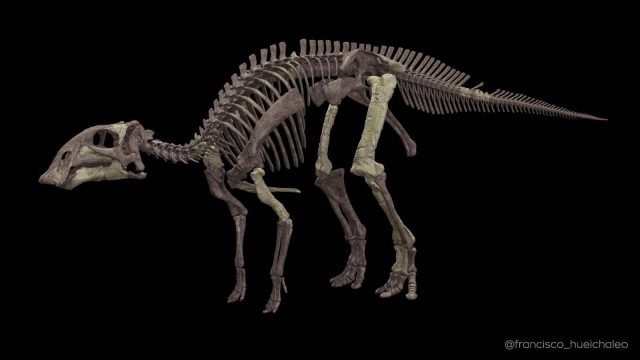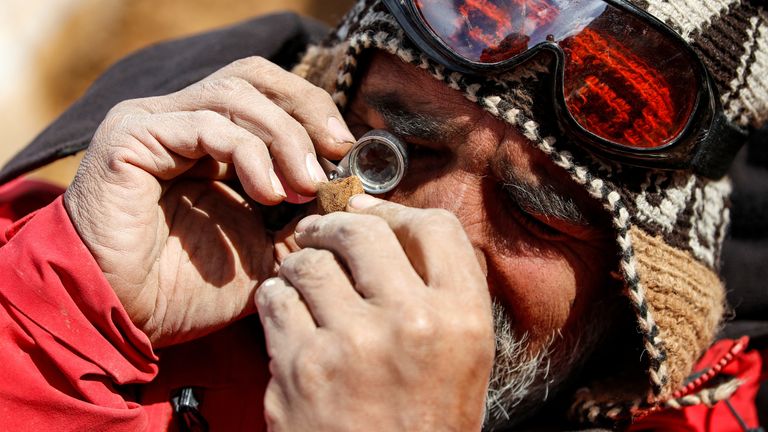Scientists have discovered the fossilised remains of a new species of duck-billed dinosaur that roamed Chile 72 million years ago.
Dubbed Gonkoken nanoi, the plant-eating creature weighed up to a tonne and could grow to 4m (13ft) in length, according to research published in Science Advances.
The find follows an almost decade-long investigation.
In 2013, an expedition led by the Chilean Antarctic Institute (INACH) uncovered fragments of yellowish bones at the bottom of a hillside close to the Torres del Paine national park in Patagonia.
Jhonathan Alarcon, the main author of the study, said: “At first, we thought it was from the same group as other South American hadrosaurs, but as the study progressed, we realised that it was something unprecedented.”
He said researchers had to delicately extract more than 100 pieces of bone, taking care not to damage others in the process.
Following this, palaeontologists had to make sure the remains belonged to the same species and check them with existing research to verify that it was a new kind of dinosaur.
Another study author, Alexander Vargas, said: “[The] Gonkoken nanoi is not an advanced duck-billed dinosaur, but rather an older transitional duck-billed lineage – an evolutionary link to advanced forms.”
More from Sky News:
New species of armoured dinosaur found on Isle of Wight
Dinosaur had longest neck ever seen in an animal
Giant dinosaur footprint largest ever found in Yorkshire
Skeleton of 82ft-long dinosaur found in man’s backyard
The extensive research allowed scientists to digitally reconstruct the skeleton – and they’re now planning to create a 3D print so it can go on public display.
Gonkoken is a combination of two words from the language of the indigenous Aonikenk people, who inhabited Patagonia until the end of the 19th century.
“Gon” means similar or similar to and “koken” means wild duck or swan.
“Nanoi” is in recognition of Mario ‘nano’ Ulloa, a former rancher who provided the team with support during the first discoveries.













![Mr Logic signs two dancehall artistes unto his Red Panther record label [Video]](https://ghananewss.com/storage/2023/05/Mr-Logic-signs--100x75.jpeg)





